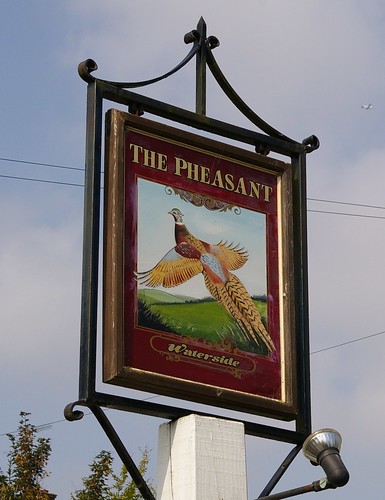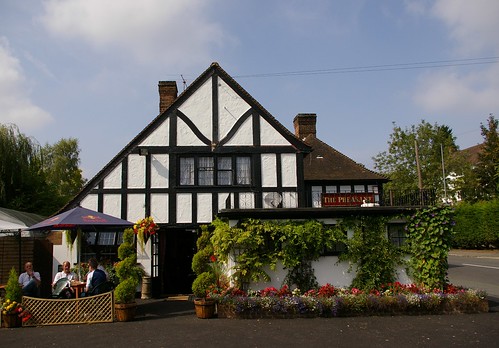I wrote recently about my following a new blog called Blagger. Reading the blog has inspired me to broaden my skills in the kitchen. I already make a mean tomato chutney, and a decent loaf of bread. But what of brewing? What can I do when I am not on the lifelongpubrun? Blagger has posted about homemade beer, champagne, wine, and schnapps. So I thought I should give it a go….
My friend recently donated a fermentation bucket, and some sloe berries. A whole world of yeasty bubbliness has opened up to me! But before I run headlong into taking on Anheiser-Busch InBev or Magners, I need somewhere a little smaller to start. So with a spring in my step, I headed home last night to take my first foray into making Sloe Gin.
Sloe Gin is easy, most of the ingredients are mentioned in it title. Gin, Sloes, and some sugar. I used the BBC Food Recipe for this, but any will do.
Step 1 – Prepare Your Equipment

To make sloe gin you will need
Ingredients
450g/1lb sloes
225g/8oz caster sugar
1 litre/1¾ pint gin
Equipment
1.5 litre bottle with lid
Funnel
Sterilising powder
Pin/toothpick
It is wise to sterilise the bottle and funnel before starting the mixing process to prevent any spoiling of your drink.
One tip I picked up from talking to friends and passers by about making gin is that the sloes should be frozen beforehand. Some of the other recipes on the internet suggest that freezing the berries simulates a frost and so makes a sweeter drink. My reason for freezing the berries is that it makes them easier to prick.
Step 2 – Ready the Sloes

With everything measured and clean, you will now need to prepare your sloes to mix with the gin. This involves pricking them to allow the sloe juice to seep into the gin.
As mentioned above, it was suggested to me that using frozen berries works best. Once you start on the pricking process (1lb of sloes took approximately 30 minutes to prick), you will be thankful. The firmness of the iced sloes means that there is no spurting of juice, or staining of hands/carpet/pet. I did find my fingers going numb at about halfway. I intermingled the pricking of the berries with the odd sip of beer… for medicinal purposes only, you understand.
As you prick each berry pop it into your bottle. It saves doing this later, and my funnel was no where wide enough at the bottom to let through the sloes.
Once you have finished with pricking the sloes, pour all of the sugar into the bottle. I used the funnel for this as it makes it easier. Don’t worry if any sugar sticks to the funnel as you will shortly be washing everything over with gin.
Step 3 – Mix Everything Together

Right! Now we’re ready to add the gin. You will now realise why you need a 1.5 litre bottle for 1 litre of gin. As mentioned above, you can use the gin to wash all the remaining sugar from the funnel into the bottle. I managed to get nearly all of the gin in there. Nearly. There was just enough left in the gin bottle for a quick drink to reward a job well done.
Put the lid on and you are now ready to mix all of the ingredients for the first time.
Step 4 – Shake, Rattle, & Store Your Sloe Gin

With all of the ingredients in the bottle, you need to give everything its first mixing. Shake the bottle until all of the sugar has dissolved. This only takes a couple of minutes. Already you should be able to see some purple colouring of the liquid. All that you need to do now is store your sloe gin in a cool dark place.
Depending on which recipe you are following, you now need to shake the mixture every day (or every other day) for two weeks. Then shake the mixture once a week for a month. Finally, give your sloe gin a mix every now and then.
The whole process including sterilisation took about an hour.
So, how long before being able to drink this? Most recipes call for a year of maturation, but you should be able to start tasting your sloe gin after about 3 months. Don’t plan on a great big session then as this stuff only gets better with age. Plan on a minimum of 6 months before really starting to dig in.
Further Reading
While you are waiting for your sloe gin to mature, you should check out everything sloe related from The Cottage Smallholder’s blog. Of particular interest is the article on Wild Damsen and Sloe Gin Recipes. At the bottom of the article are some Tips and Tricks. I particularly like the idea of re-using the sloes by adding medium sherry.
 Tucked away in a quiet little corner at the Stratford International end of Westfield shopping centre is the brew pub called Tap East. People who I have taken to this pub are initially surprised by the fact there is a pub with decent beer within the shopping centre. I then show them the brewery area (situated behind floor to ceiling windows) and that really blows their mind!
Tucked away in a quiet little corner at the Stratford International end of Westfield shopping centre is the brew pub called Tap East. People who I have taken to this pub are initially surprised by the fact there is a pub with decent beer within the shopping centre. I then show them the brewery area (situated behind floor to ceiling windows) and that really blows their mind!  Recently, Tap East brewed a Dry Hopped lager which blew me away! It was one of the finest balanced dry hopped lagers I've tasted. Adnams Jack Brand was previously my favourite, but I was blown away by the flavour profile of the Tap's one. I cannot wait for them to brew more! Unfortunately this may not happen for a while (according to their head brewer) as lagering ties up one of their tanks for a lot longer than when brewing the other beers. But if it does come on, I'll be first in line for a pint!
Recently, Tap East brewed a Dry Hopped lager which blew me away! It was one of the finest balanced dry hopped lagers I've tasted. Adnams Jack Brand was previously my favourite, but I was blown away by the flavour profile of the Tap's one. I cannot wait for them to brew more! Unfortunately this may not happen for a while (according to their head brewer) as lagering ties up one of their tanks for a lot longer than when brewing the other beers. But if it does come on, I'll be first in line for a pint! 














